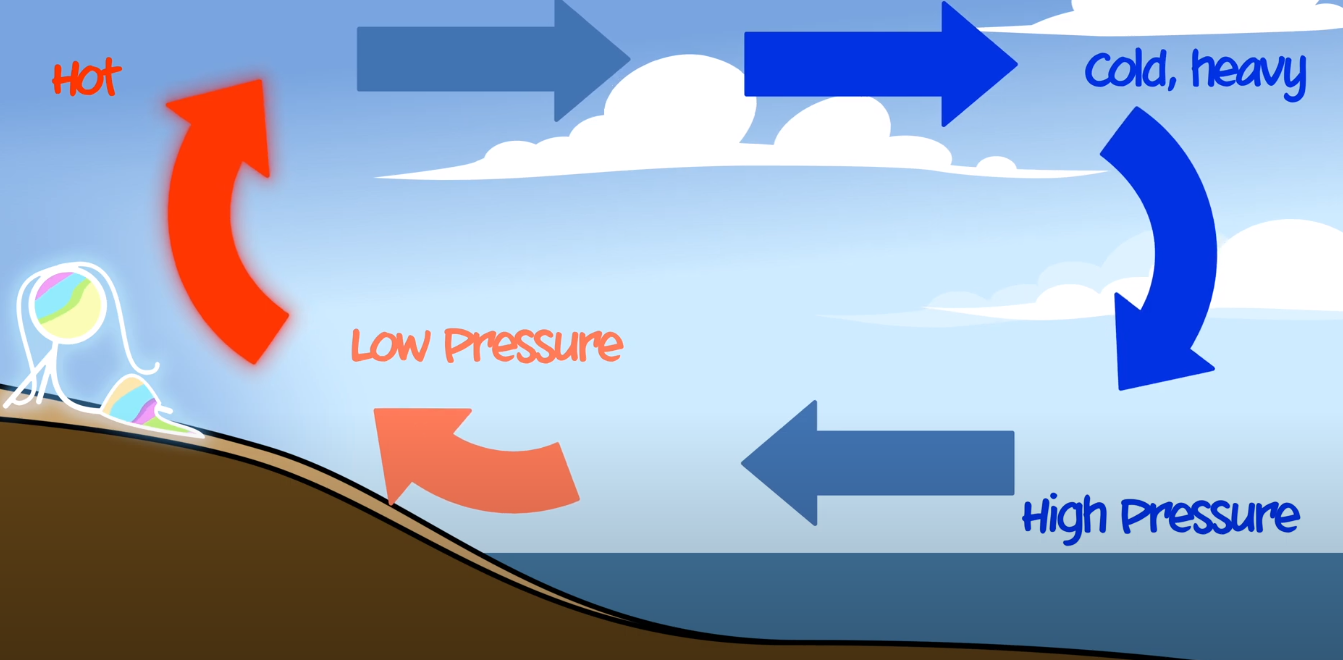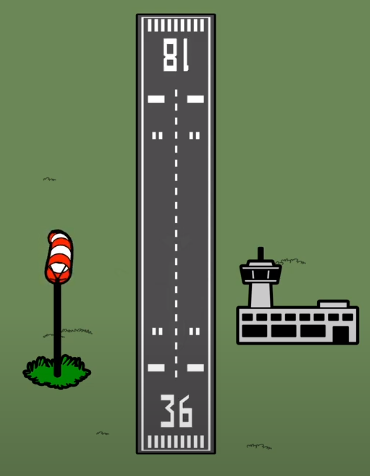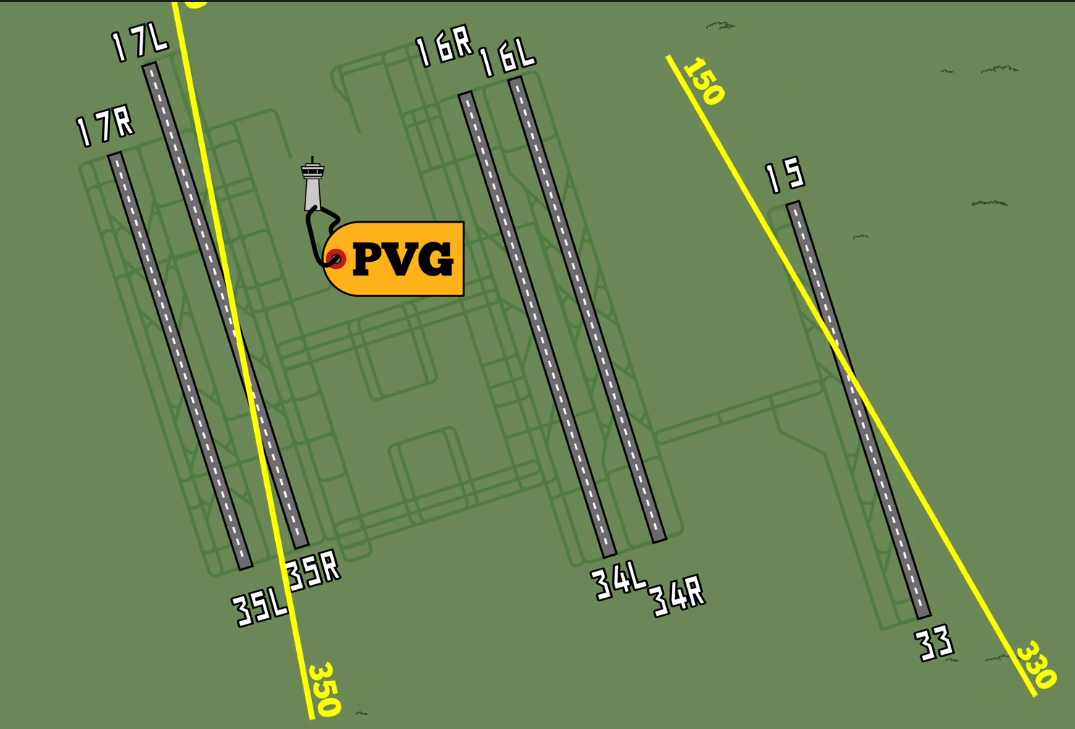How Airport Runways Are Numbered
Acknowledgement
Most of the content in these notes, including the images, are directly taken
from the YouTube video by CGP-Grey:
Source.
When building an airport the architects need to think about the
direction of the runways that they plan to build.
Pilots prefer runways with winds in the parallel direction so that
they need less runway and it's makes for safer and stabler landing.
Planes take off and land into the wind for this reason.
Planes can land with winds unaligned but it a harder maneuver and the
plan tries to keep parallel to the wind as long as possible and tries
to land on a runway side ways.
The simple solution in the early days of aviation was to build a
triangle of runways and put of a wind sock and direction the plan to
the runway that works the best.

But as aviation grew, so did airplanes and their runways, making it
impractical to keep building triangle runways.
If you measure wind speed and direction for a period of time you can
build something called a 'wind-rose' which is a data visualization tool
which help figure out the direction of the winds over time. The bars
show the direction that the wind blows from.

The readings in most places, most of time, most of the wind blows back
and fourth in one direction. This happens because wind is a current of
air that blows from high pressure to lower pressure regions which are
created by the heating of the earth by the sun.

However, in some locations the wind-rose reveals 2 frequent directions
of wind. So to make sure that the airport is safest a lot of small
locations run runways in 2 directions. This isn't necessarily for more
traffic but rather for more safety.

And when you have more than 1 of something you have the need to
name/identify those things so that you can distinguish them in
communication. Sure you could just number then in a sequence but it's
not a smart idea to use the first thing that comes to mind.
The wind-rose reveals a better way by using the directions of the wind
in terms of the compass points.
So, runways are numbered based on the direction that the plane in
landing towards. The same runway has 2 different directions that it
could be used with based on the direction that the pilot is landing
(which in-turn is based on the direction of the wind). So, each end
of the runway has a number which is it's direction from the
perspective of the pilot on the compass points, rounded to the closest
10 and then truncating the 0.
So a runway that points (from the perspective of the plane) to 356° is
rounded to 360 and then the 0 is truncated to get 36.

Now, for bigger cities with bigger airports, due to higher traffic,
the airports are going to have parallel runways which face the same
direction. To distinguish between these runways use the following
rules:
- For 2 parallel runways: Use an L or an R for left or right to
distinguish the runway.
- For 3: use a C for center too.
- For more than 3: 2 runways will get the correct heading with L and R
but the others are going to get the next closest numbers but not
exactly correct.

Lastly, every few decades runway numbers change due to magnetic north
changing. So, runway numbers are repainted every few years. Airports
still use the magnetic north rather than true north (which is based on
the rotation of the earth.)
This affects the airports that are closest to the north pole the most
and with Canada having the most number of airports near the north
pole it would have to keep changing airport runway numbers constantly.
Since Canada has to constantly change runway numbers, it changed it's
system to use the True north for runway numbers rather than the
magnetic north. But... these runways are inconsistent with runways in
the whole rest of the world. Canada thinks it's system is better and
has created an aviation agency to try and convince the other counties
to change their system too.
Summary
Runways are built based on the wind direction since it's safest to land
into the wind. Usually, the wind blows along one line (front or back)
or on 2 different lines most prominently. This leads to most airports
having 2 runways.
Runways are numbered based on the direction they face (from the
perspective of the plane) by using the compass points in degrees and
rounding the direction to the closest 10 and then truncating the 0.
So, a runway facing 128° is going to get numbered as 13.
Since runways can be used in 2 different directions, each end of the
runway has a different number based on the direction they face.
There are 2 norths that can be used for the numbering of runways:
- Using magnetic north ( the numbers change every few decades since
the magnetic north changes. )
- Using True north. (Only Canada uses this system and is trying to get
the other countries to change.)